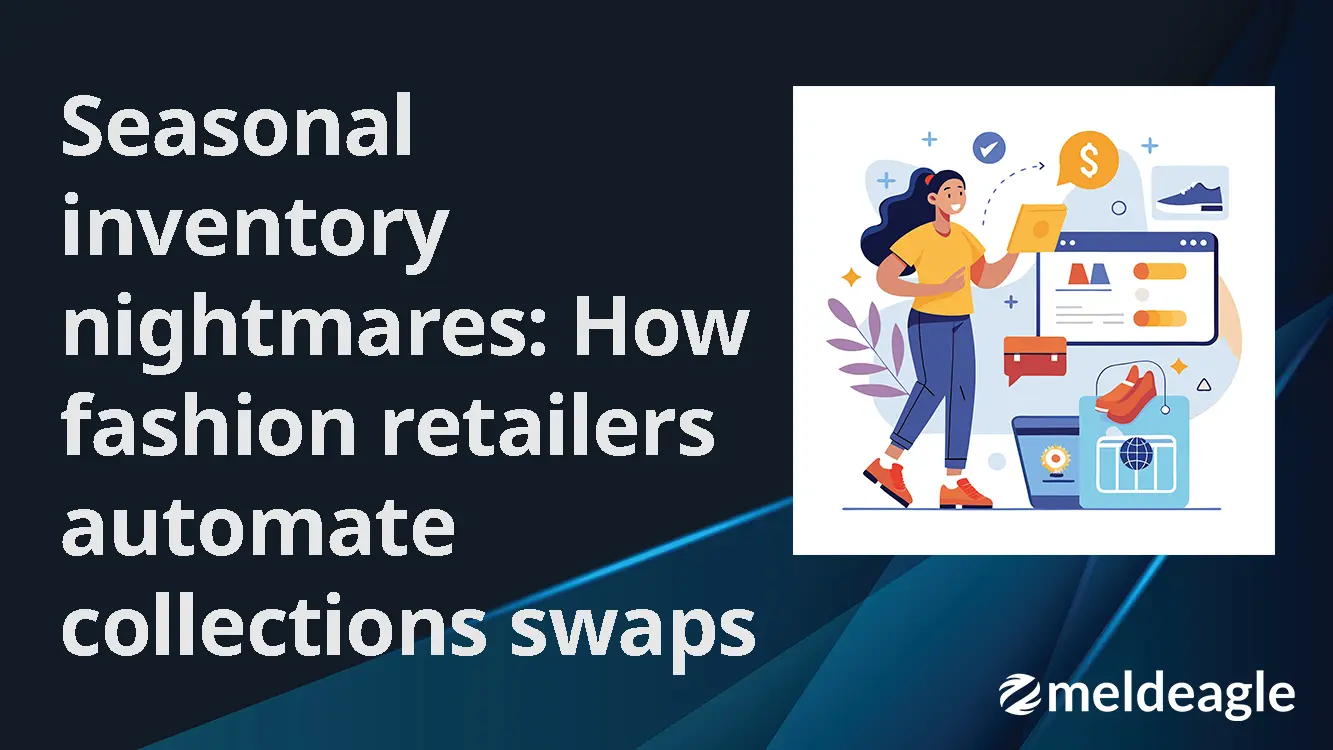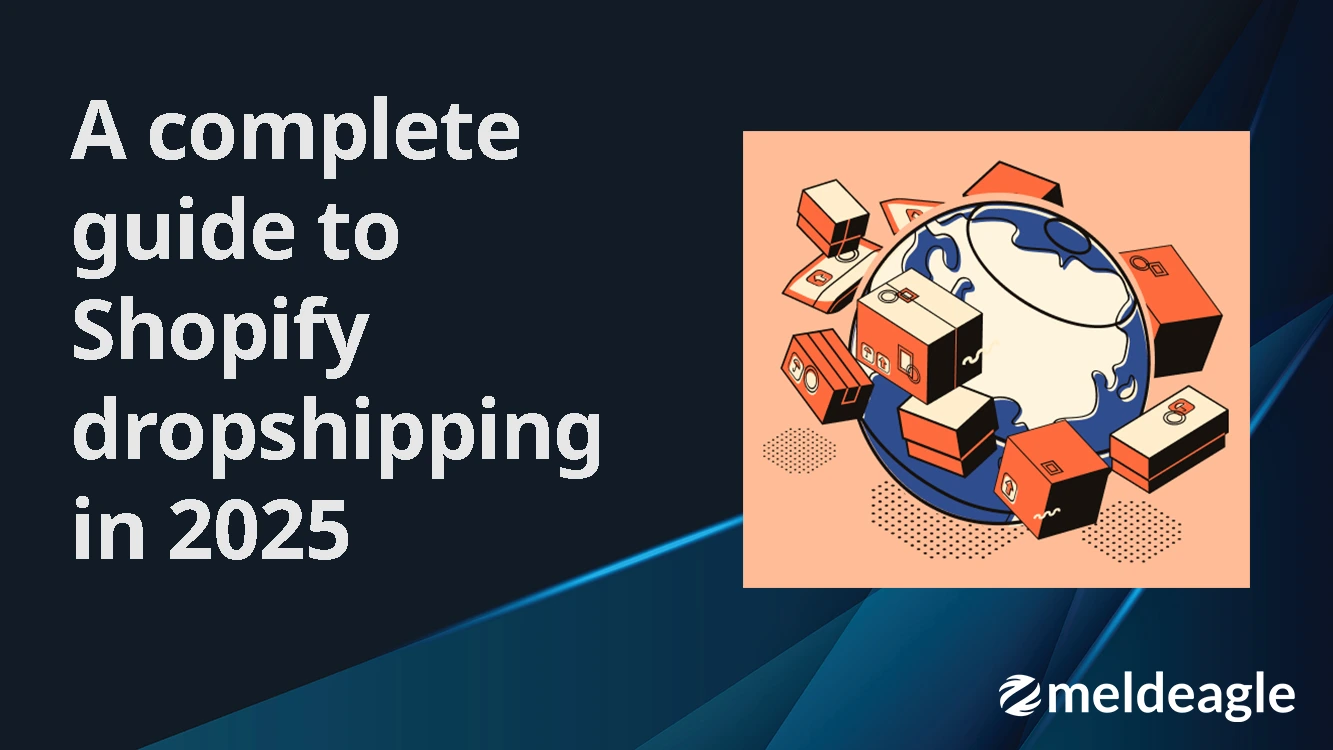
Seasonal inventory nightmares: how fashion retailers automate collection swaps
If you've ever managed a fashion retail store on Shopify, you know the challenges of seasonal transitions. Four times a year, Spring/Summer collections replace Autumn/Winter, sale items need repricing, and thousands of products require archiving. All of this must be coordinated while ensuring your store operates smoothly across all channels.
The seasonal transition is perhaps the most challenging aspect of fashion retail. Unlike other industries where products remain relatively stable, fashion retailers face a complete inventory overhaul multiple times per year. Let's explore how Shopify automation tools can transform this chaos into a streamlined process.
The seasonal transition challenge
Fashion retailers face unique inventory challenges that other sectors simply don't encounter. When the calendar flips from winter to spring, it's not just about adding a few new products. It's a complete transformation of your store's identity that requires sophisticated product catalogue management.
Consider what happens during a typical seasonal transition:
- Mass archiving: Using bulk product management, thousands of autumn/winter items need to be hidden from customers but kept in the system for historical data and potential returns.
- Bulk publishing: An entire new collection needs to go live, often at a specific time to coordinate with marketing campaigns and automated product upload processes
- Variant complexity: Each style comes in multiple sizes and colours, creating exponential complexity that can be managed effectively by leveraging advanced automation for Shopify variants
- Price adjustments: Old season items need markdown prices, whilst new arrivals need careful pricing strategy with automated pricing rules
- SEO updates: Product descriptions, tags, and metadata need seasonal relevance through shopify seo automation
For a medium-sized fashion retailer with 5,000 SKUs, a seasonal transition can involve over 20,000 individual product updates. Doing this manually isn't just time-consuming – it's a recipe for errors that can cost thousands in lost revenue. This is where shopify bulk updates and automation become essential.
Pre-season preparation: laying the groundwork
The key to a smooth seasonal transition starts weeks before the actual changeover. Smart retailers have learnt that preparation is everything when it comes to managing thousands of products on Shopify efficiently using automated product management systems.
Setting up your product structure
Before the season hits, establish a clear product hierarchy. Use consistent naming conventions that include season codes. For instance, "SS25-DRESS-FLORAL-001" immediately tells you this is a Spring/Summer 2025 floral dress. This structure becomes crucial when you need to use the shopify bulk editor or more advanced bulk product editing shopify tools.
Creating automation rules
The beauty of modern shopify automation uk solutions lies in creating rules once and applying them season after season. Set up templates for:
- Automatic tagging based on product categories using automated product categorisation shopify
- Pricing formulas that calculate markdowns with dynamic pricing shopify
- SEO templates that include seasonal keywords through product description automation
- Collection assignments based on product attributes using bulk collection editor
Preparing your data feeds
Whether you're receiving product data via xml product import or through shopify api integration, ensure your suppliers provide complete information. Missing size charts or colour swatches can derail your entire launch timeline. Proper product feed integration and supplier data sync are crucial for seamless transitions.
Mid-season adjustments: staying agile
Fashion retail doesn't pause between seasons. Mid-season adjustments are crucial for maintaining profitability and relevance. This is where real-time product updates shopify capabilities and live inventory sync become invaluable.
Dynamic inventory management
As certain styles sell faster than others, you need automated inventory management systems to:
- Identify slow movers for early markdowns using shopify automation tool analytics
- Reorder bestsellers before stockouts with prevent stockouts automation
- Adjust prominence in collections based on performance through automated product management
- Update "last few remaining" tags to create urgency with real-time stock updates
Coordinating with marketing campaigns
Your inventory system needs to talk to your marketing calendar. When your email campaign promotes a flash sale, your prices need to update automatically through shopify price updates. When social media highlights a specific collection, those products need to be perfectly presented with accurate stock levels via real-time inventory management.
This coordination becomes seamless with shopify workflow automation tools that can reorganise your collections based on performance metrics, seasonal trends, or promotional calendars.
End-of-season clearances: maximising recovery
The end of season is where shopify automation really shines. Instead of manually calculating markdowns for thousands of items, automatic price adjustment systems can handle the entire process based on your parameters.
Intelligent markdown strategies
Create rules using shopify bulk price changes automation that consider:
- Current stock levels through inventory sync shopify
- Weeks until new season launch
- Product age tracked by automated data import
- Historical sell-through rates from shopify business automation analytics
For example, dresses with high stock levels might receive 40% markdowns, whilst low-stock items get 20% off to maximise margin. These calculations, impossible to do manually at scale, become trivial with price sync automation.
Bulk archiving without losing data
When it's time to hide old season products, you don't want to delete them. Customer service still needs access for returns. Analytics require historical data. Shopify bulk operations tools can archive thousands of products whilst maintaining their data integrity through proper product data management.
The technology behind seamless transitions
Understanding the technical infrastructure helps you make informed decisions about your shopify automation strategy.
Real-time synchronisation benefits
Real-time sync shopify ensures that when a product sells in-store, online stock updates immediately. During seasonal transitions, this prevents the awkward situation of promoting products that are actually sold out. The shopify live sync functionality is essential for multi-channel retailers.
Handling variant complexity
Fashion's size and colour variants create exponential complexity. A single style in 5 colours and 6 sizes creates 30 SKUs. Multiply this by hundreds of styles, and you're managing thousands of variants. Bulk variant editor tools and automated vendor updates eliminate the manual creation of each combination through sophisticated variant management shopify systems.
Metafield management for rich product data
Fashion products need rich data beyond basic descriptions. Fabric composition, care instructions, fit guides – all of this lives in metafields. Bulk metafield editor and shopify metafield automation ensure this crucial information transfers seamlessly between seasons through proper product information management.
Cost-benefit analysis: automation vs manual processes
Let's examine the real impact of shopify automation vs manual processes on seasonal transitions.
Time savings
A manual seasonal transition for a 5,000 SKU store typically requires:
- 2 staff members
- 2 weeks full-time work
- 160 total hours
With shopify time saving tools and automation:
- 1 staff member
- 2 days oversight
- 16 total hours
That's a 90% reduction in time, allowing your team to focus on creative tasks like merchandising and customer service through streamline shopify operations.
Error reduction
Manual data entry has an average error rate of 1-3%. On 20,000 updates, that's 200-600 errors. Each error might cost lost sales, customer complaints, or return processing. Eliminate manual errors and reduce shopify errors through automation, and these costs disappear with proper data validation shopify systems.
Revenue impact
Faster transitions through shopify operational automation mean:
- New collections launch on schedule with automated product upload
- Markdowns happen at optimal times through automated pricing rules
- Stock levels stay accurate with inventory accuracy systems
- Customer experience remains smooth through error-free updates
Retailers using enterprise shopify automation report 15-20% better sell-through rates simply because their seasonal transitions happen more efficiently.
Implementation strategies for fashion retailers
Starting your shopify automation uk journey doesn't require a complete overhaul. Here's a practical approach to scale shopify store operations:
Phase 1: Basic automation (Months 1-2)
- Implement bulk pricing updates with shopify bulk price editor
- Set up automatic tagging through shopify product automation
- Create collection rules using shopify collection automation
Phase 2: Intermediate automation (Months 3-4)
- Connect supplier feeds through vendor product sync
- Automate variant creation with bulk product upload
- Implement inventory sync through stock level automation
Phase 3: Advanced automation (Months 5-6)
- Custom pricing algorithms through automated pricing rules
- Predictive markdown strategies using shopify business growth analytics
- Multi-channel synchronisation for marketplace integration
Common pitfalls and how to avoid them
Even with shopify automation tools, seasonal transitions can go wrong. Here are common mistakes and solutions:
Over-automation
Don't automate everything immediately. Start with repetitive tasks through automate repetitive tasks and gradually expand. Human oversight remains crucial for quality control in automated product management.
Poor data quality
Automation amplifies data problems. If your product titles are inconsistent, bulk updates become complicated. Invest in data cleanup before implementing automated bulk editing systems.
Ignoring testing
Always test automation rules on a small product subset before applying them store-wide. A misconfigured rule in your shopify workflow efficiency system can cause more problems than manual updates.
Measuring success
Track these metrics to gauge your shopify automation roi:
- Time spent on seasonal transitions using save time shopify metrics
- Error rates in product data through shopify error prevention tracking
- Speed to market for new collections via efficiency tools shopify
- Sell-through rates by season using shopify store scaling analytics
- Staff satisfaction scores from reduce manual work initiatives
Successful business automation shopify should improve all these metrics within the first year.
The future of fashion retail automation
As fashion retail evolves, shopify automation capabilities expand. Emerging trends in professional shopify automation solutions include:
- AI-powered demand forecasting integrated with automated vendor updates
- Automatic style recommendations through product feed automation
- Predictive inventory ordering via supplier feed management
- Dynamic personalisation through shopify multi-channel sync
Retailers who master basic shopify catalogue automation today position themselves to leverage these advanced capabilities tomorrow.
Taking the next step
Seasonal transitions don't have to be nightmares. With the right shopify automation strategy, they become opportunities to refresh your store efficiently and effectively. Whether you're managing hundreds or thousands of products, cost effective product management tools like MeldEagle can transform your seasonal workflows.
MeldEagle specifically addresses the fashion retail challenge with features designed for seasonal transitions. The platform's bulk archiving capabilities can hide thousands of out-of-season products whilst maintaining their data for returns and analytics. Meanwhile, its smart pricing engine automatically applies markdown strategies based on your predefined rules, ensuring optimal sell-through rates without manual calculation through advanced shopify automation uk solutions.
The key is starting where you are. Even basic automation of repetitive tasks can save dozens of hours during seasonal transitions. As you become comfortable with these tools, you can expand into more sophisticated automation strategies. MeldEagle's phased implementation approach means you can start with simple price updates and gradually add variant management, supplier integration, and multi-channel synchronisation as your confidence grows with shopify plus automation capabilities.
Fashion retail is fast-paced and demanding, but it doesn't have to be overwhelming. By automating the mechanical aspects of seasonal transitions through automated catalogue management shopify, you free your team to focus on what really matters: curating beautiful collections that delight your customers.
Ready to transform your seasonal transitions? Consider how affordable shopify automation solutions like MeldEagle can help you grow shopify catalogue operations without scaling your stress levels. The future of fashion retail is automated, efficient, and surprisingly manageable with the right shopify automation tool.





